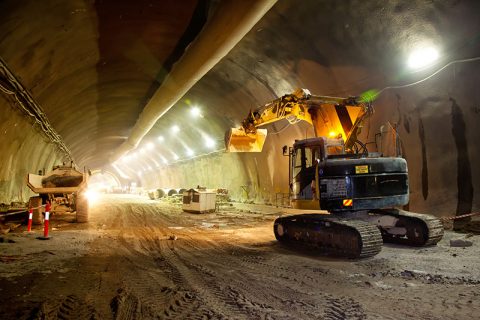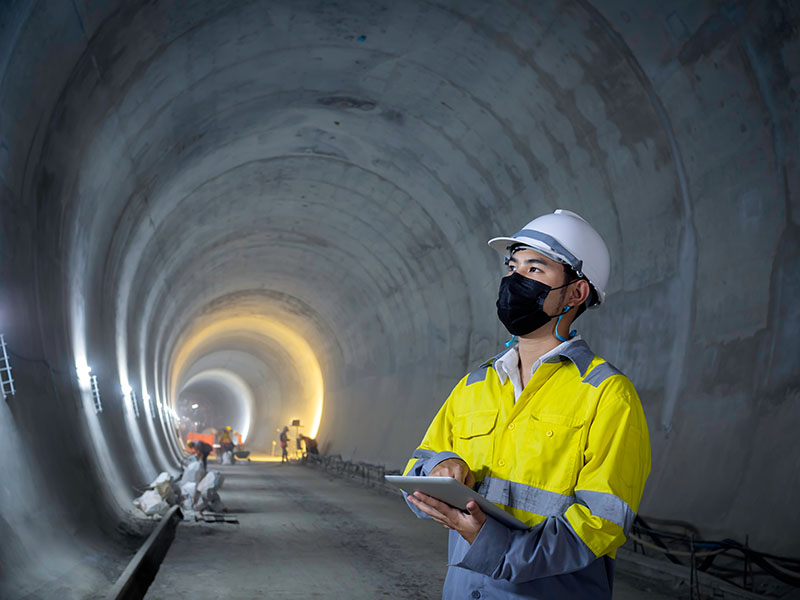Tunnels are a great way to move material or personnel from one place to another without dealing with obstacles on the surface. While the final results smoothen the commute, the process of actually building a tunnel is fraught with dangers.
However, with the proper precautions, these dangers can be effectively mitigated. This article will give a quick guide on safe tunnel construction.
1. Surveying The Target Area
Surveying the area where a tunnel is to be built is essential to creating a safe tunnel. This is because the survey helps identify potential risks and hazards which can be mitigated.
For example, if the ground is unstable, measures can be put in place to stabilize it before construction begins. Additionally, the survey can help identify any underground watercourses or voids that could risk the tunnel structure.
To accurately survey the area, minearc systems are often used. These systems use sensors to detect various risks and hazards, and they are accurate enough to be used in even the most complex environments. As a result, surveying the area before starting construction is essential to building a safe tunnel.

2. Excavating The Tunnel
Once the area has been surveyed, and potential risks have been identified, it is time to excavate the tunnel. This is typically done with a piece of heavy machinery, such as tunnel boring machines (TBMs). While TBMs are effective at excavating tunnels, they can also pose a risk to workers if they are not used properly.
It is crucial to have proper safety protocols to mitigate this risk. For example, workers should be trained in operating these TBMS, such as the mammoth model designed by Germany for the Silvertown Tunnel Project. Also, there should be someone monitoring the machine at all times.
3. Proper Ventilation Is Key
While in the line of duty, it is not uncommon for workers to be exposed to harmful gases. As a result, proper ventilation is essential to keeping workers safe. Fans and ductwork are installed throughout the structure to ensure adequate ventilation for a tunnel. Additionally, it is essential to have an emergency plan in place in case of a gas leak. This plan should include having emergency exits and gas masks readily available for workers.
4. Working In shifts
Another way to keep workers safe while excavating a tunnel is by working in shifts. Working long hours can put workers at risk of fatigue, leading to accidents.
Additionally, working in shifts allows for more rest breaks, which helps to reduce the chance of errors being made. Finally, it gives workers time to eat and stay hydrated, which is vital for maintaining safety while working.
5. Communication Is Key
When it comes to safe tunnel construction, communication is vital. Workers need to communicate with each other to coordinate their efforts and stay aware of potential hazards. Clear and concise communications are necessary to maintain safety while operating machinery and equipment. Also, effective communication is essential for managing traffic and preventing accidents.
Regular communication with inspected is necessary to ensure that the tunnel meets all safety standards.
By maintaining open lines of communication, workers can make sure that everyone is on the same page and that the tunnel is safe for use.
6. Have An Emergency Plan In Place
Imagine This Scenario: You’re in the middle of construction on a new highway tunnel when a significant earthquake hits. The shaking damages the tunnel’s supports, and part of the ceiling collapses. Now you have a big problem on your hands. If you don’t have an emergency plan in place, it will cost you a lot of time and money to fix the damage and get the tunnel up and running again. But if you do have a plan, you can save your business a lot of grief (and money).
That’s why it’s essential to develop an emergency plan and team before you start construction on a safe tunnel. You’ll know exactly what to do if something goes wrong with a plan in place. An emergency plan should include a list of people to contact in case of an emergency, an evacuation route, and a list of supplies that should be on hand. By having a plan in place, you can be sure that you’re prepared for anything.
7. Inspecting The Tunnel Regularly
Safe tunnel construction requires that once a tunnel has been excavated, it is essential to inspect it regularly. Tunnels can collapse if they are not properly maintained. Special equipment is used to inspect a tunnel effectively. This equipment includes things like ground-penetrating radar (GPR) and infra-red cameras. Potential risks can be identified and remedied using this equipment before they cause any damage.
Final Word
You can build a safe tunnel by following the steps outlined in this article. However, you must note that this is just a quick guide.
For more detailed information on safely constructing a tunnel, please consult with an expert.

